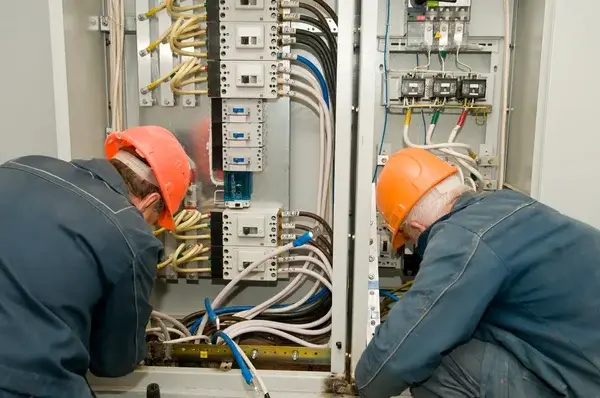
If you open the door to your electrical panel, you’re probably greeted by a massive array of switches. These are your circuit breakers, and they’re how your electrical system remains safe and protected from excess current. However, what your eyes may not pick up on is the fact that not all of these breakers have been created equally. In fact, there are three commonly-used types of breakers that you might see in your electrical panel at any given time. What makes them different and how do you know you’re using the right one for your circumstances? This blog will help you make the right decision and keep your home safe.
Standard Circuit Breakers
Your standard circuit breaker is by far your most common type of breaker. They’re the most affordable, easiest to use, and most widely-available breakers on the market. In fact, should one ever go bad, there’s a strong chance you can find a replacement at a home improvement store nearby for just a few dollars. Standard breakers all have a rated capacity that they are built to handle, and this capacity determines the number of amperes that a particular circuit can support. Should too many amps flow through a circuit, your breaker shuts off and kills the circuit, preventing any potentially serious damage that may come from components overheating or becoming damaged by too much electrical power.
Standard breakers are what you will see for the majority of applications in your panel. Bedrooms, dens and offices, living areas, and even some bathrooms and kitchens will run on a standard circuit breaker. Bedrooms and other low-consumption areas will typically feature a smaller breaker (a 15 to 20 amp connection) while bigger and more widely-used spaces like your living room will typically have a bigger breaker (such as a 25 to 30 amp option).
Ground Fault Interrupter Breakers
Have you ever noticed that there is typically one outlet in your bathroom or kitchen that has two buttons on it? One probably reads “test” and the other “reset.” This is an outlet that is equipped with what is known as a ground fault interrupter, which is an important safety device that is designed to protect you in the event of an accident that could threaten harm or bodily injury. For example, when someone goes to plug something in and the plug and their hands are both wet, they could accidentally create a way for current to reach the ground with little resistance, causing serious injury. This triggers a GFI to shut off, causing the circuit to break at a much lower current level than a standard circuit breaker would.
A ground fault interrupter breaker, or GFI breaker, is a circuit breaker that is equipped with this same technology, and is an ideal choice to use in applications and circuits where an outlet with a GFI may not be present. For example, say you wish to install a ceiling fan and several light fixtures on your covered patio. This is a great reason to run a new electrical circuit, but this doesn’t include an outlet where you can install a GFI for safety in the event of a ground fault. In these instances, installing a GFI-equipped outlet provides you with this same level of protection and safety. When the GFI detects a ground-fault (such as a stream of rain water flooding into your light fixture), it shuts off, killing the circuit and protecting your home from potential damage. You don’t necessarily need one of these breakers if a circuit is protected by a GFI in a different location, but they are highly recommended for any application where the risk may exist and GFI protection isn’t available.
Arc Fault Interrupter Breakers
Finally, arc fault interrupter is a safety device that detects a number of different potential problems in an electrical line and shuts off when it sees any of them. In technical terms, an “arc” is an unintended transfer of electrical power through a path that was not intended or planned. Typically, arcing creates intense heating at the point where electricity jumps through the unintended path, and this can cause burning, melting, and other damage to materials. The excessive heat can also spark fires, and any flammable material located nearby could be at risk.
Arc fault interrupters are designed to prevent this problem by shutting off the instant they detect an arc in an electrical circuit. These breakers are quite a bit different from the other two, using advanced circuitry to sense arcing conditions and react accordingly. However, what’s truly amazing about them is that they are able to discern between intended and unintended arcing. Believe it or not, arcing is a fairly normal part of electrical equipment in some cases, such as in vacuum cleaners or furnace motors. In these cases, an AFI breaker won’t shut off and will continue to run properly. However, in the presence of an unexpected or atypical arc, these systems shut off and protect your home. AFI breakers can be used in conjunction with an outlet-located GFI to offer protection against both of these potentially dangerous faults.
Interested in upgrading your electrical panel? Need help with a frustrating and pesky breaker problem? Get help from the pros at A-TEMP Heating, Cooling & Electrical! Dial (503) 694-3396 today.
5 Star Rated
Quality Service That Will Make You Smile

Serving All Members of Your Family
Family is built into our company name. For over 50 years, our family-owned & operated HVAC business has taken care of our neighbors. We focus on care for our team so they can focus on care for our customers.


.webp)
.svg)


